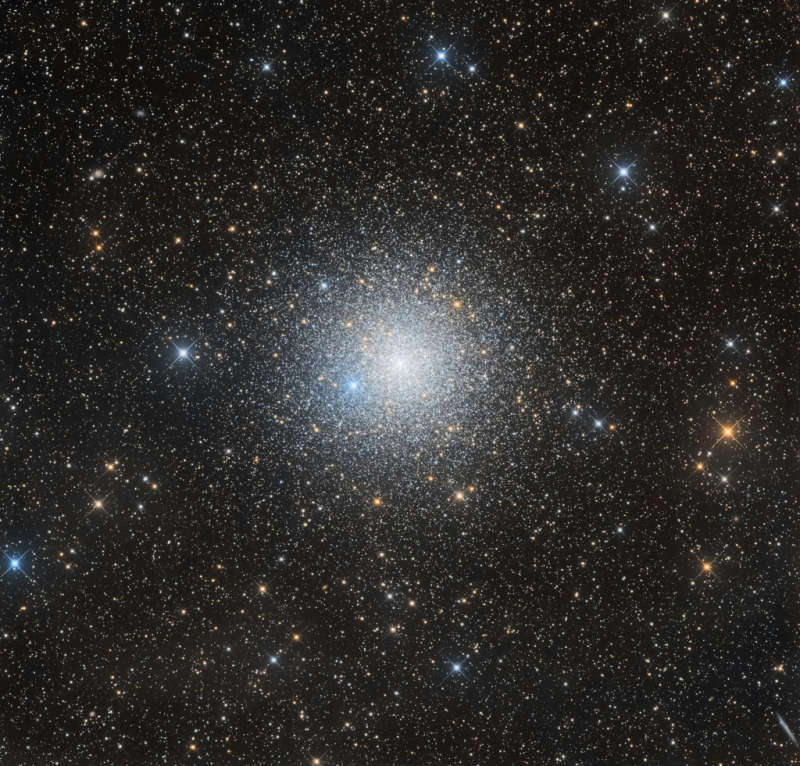Credit & Copyright: Massimo Di Fusco,
Aygen Erkaslan
Explanation:
Some 13,000 light-years away toward the southern constellation Pavo,
the globular star cluster NGC 6752 roams the halo of our Milky Way
galaxy.
Over 10 billion years old,
NGC 6752
follows clusters
Omega Centauri,
47 Tucanae, and
Messier
22
as the fourth brightest globular in planet Earth's night sky.
It holds over 100 thousand
stars in a sphere
about 100 light-years in diameter.
Telescopic
explorations
of NGC 6752 have found that
a remarkable fraction of the stars near the cluster's core,
are multiple star systems.
They also reveal the presence of blue straggle stars,
stars which appear to be too young and massive to exist
in a cluster whose stars are all expected
to be at least twice as old as the Sun.
The blue stragglers are
thought to be
formed by star mergers and collisions in the dense
stellar environment at the cluster's
core.
This
sharp color composite
also features the cluster's ancient red
giant stars in yellowish hues.
(Note: The bright, spiky blue star about 8 o'clock from the cluster
center is a foreground star along the line-of-sight to NGC 6752)
1999 2000 2001 2002 2003 2004 2005 2006 2007 2008 2009 2010 2011 2012 2013 2014 2015 2016 2017 2018 2019 2020 2021 2022 2023 2024 2025 |
Январь Февраль Март Апрель Май Июнь Июль Август Сентябрь Октябрь Ноябрь Декабрь |
NASA Web Site Statements, Warnings, and Disclaimers
NASA Official: Jay Norris. Specific rights apply.
A service of: LHEA at NASA / GSFC
& Michigan Tech. U.
|
Публикации с ключевыми словами:
globular cluster - Шаровое скопление
Публикации со словами: globular cluster - Шаровое скопление | |
См. также:
Все публикации на ту же тему >> | |
